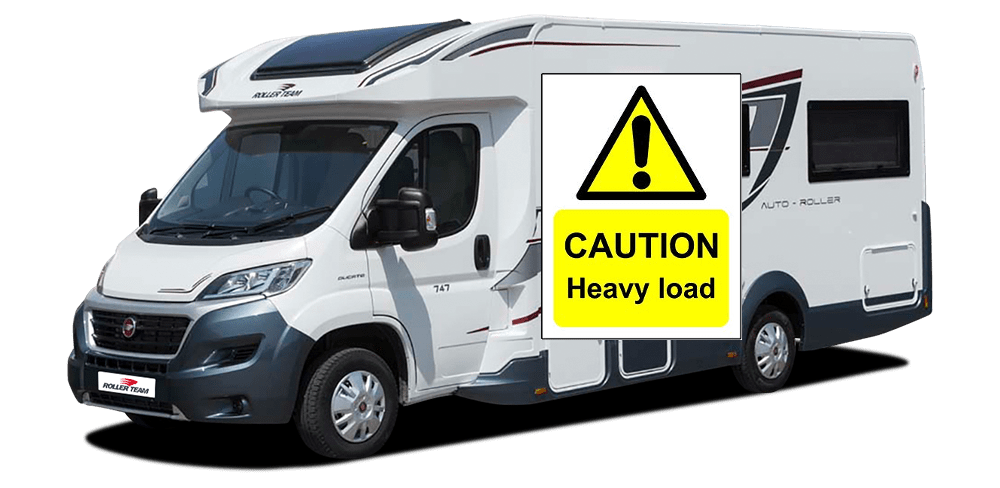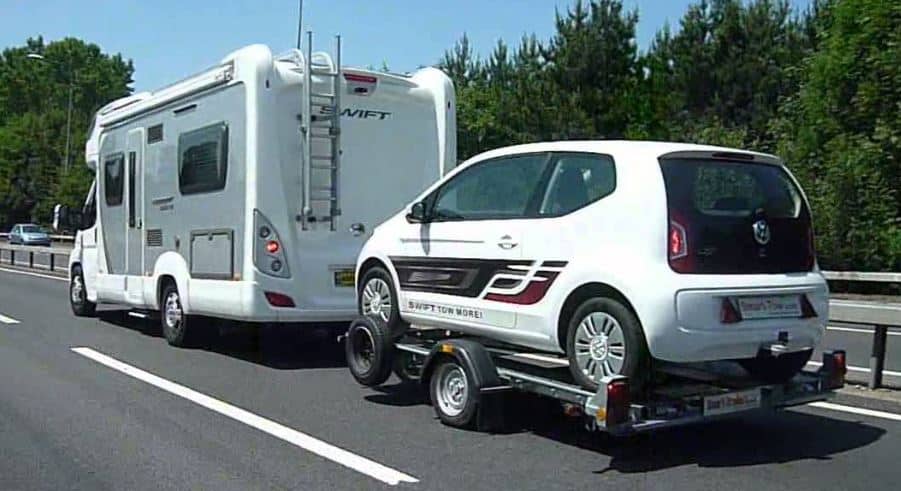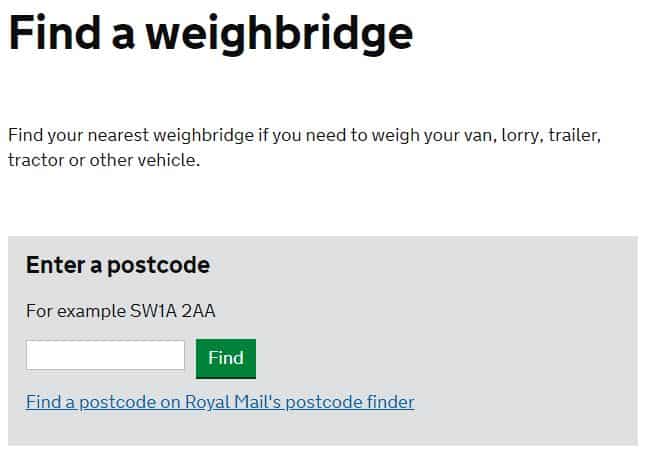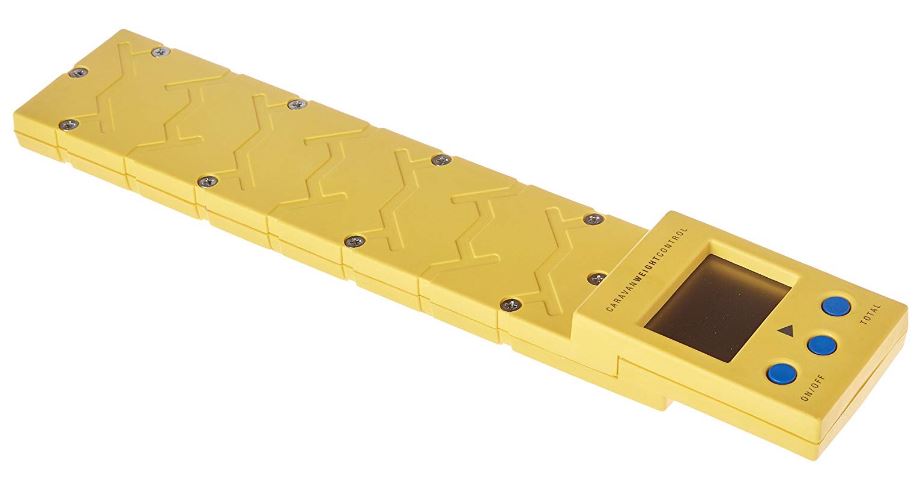
Something that can confuse quite a few people, myself included before I did my research, is understanding weight plates and limits for motorhomes. Our caravan guests have to carefully investigate and check their caravan weights, but the same is true for motorhomes. During roadside checks, the DVSA (Driver and Vehicle Standards Agency) found that 80% of the motorhomes they checked were overweight. If your vehicle is found to be overweight, you will likely be fined and stopped from moving on until your motorhome is under its MTPLM (Maximum Technically Permissable Laden Mass). Therefore, its vital that you fully understand the weight plate on your motorhome.

Its also important to appreciate that its not just the total weight of your motorhome which needs to be within its rated limit. Your motorhome also has limits for its front axle and rear axle.
Adding cycle racks or a scooter rack can also make things more complicated when calculating weight limits.
Keeping under the rated weight limits of the motorhome is important not only to avoid roadside fines and penalties but also for your insurance.
If you are driving a motorhome above its rated weight limit, you are invalidating your insurance. Therefore, if you were involved in an accident, this could create even more problems.
Hopefully, you have the time to read this whole post. If not, please use the Table of Contents below to jump to a particular section.
Disclaimer: Hey! By the way… any links on this page that lead to products on Amazon or Caravan Guard are affiliate links, and I earn a commission if you make a purchase, with no additional cost to you 🙂
- Dissolves waste and removes odours naturally and has delightful mild fragrance
Want To Visit Horton Common? – Book Here
Table of Contents
Introduction To Motorhome Weight Plates
So the first place to start is what actually is your motorhome’s weight plate, and where can you find it?
Well, the weight plate is actually the VIN plate. VIN stands for Vehicle Identification Number. Underneath the VIN number is the various weight restrictions for your motorhome.
Now, below I will provide a description of what these figures mean. But when there is a nice quick video that can quickly explain the most important points, I like to reference it.
A case in point is the video below from Practical Motorhome on motorhome weight plates:
So what I’ll now do is summarise the points made by Dave in the video above explaining how to read a motorhome weight plate.
I’ll also reference the same figures seen on the motorhome weight plate in the video as an example. The official description of vehicle weights can also be found at .GOV.
MTPLM (Maximum Technically Permissable Laden Mass)
The first figure on the motorhome weight plate in the video above is the MTPLM.
This is the absolute maxium that the motorhome can legally weigh, including your belongings (payload).
MTPLM is the current definition. However, as Dave references in the video, it used to be referred to as Gross Vehicle Weight Rating (GVWR ).
If you did get stopped in your motorhome by the Police for a roadside check, its this figure that they want to check. For this particular motorhome its 3,500kg.
An MTPLM of 3,500kg is pretty typical for motorhomes, and for good reason. For individuals such as myself who passed their driving test after 1997, our licences have a MAM (Maximum Authorised Mass) of 3,500kg.
Gross Train Weight (GTW) or Gross Combination Weight (GCW)
The next figure down on the motorhome’s weight plate is the Gross Train Weight (GTW), it is also sometimes referred to as the Gross Combination Weight (GCW).
As shown in the video, for this particular motorhome, the GTW is 6,500kg.
So what this means is this motorhome can legally tow a trailer as long as the total weight of the motorhome and trailer are below 6,500kg.
We know that the MTPLM of the motorhome is 3,500kg. Therefore the maxium weight of the trailer this motorhome can tow is:
6,500kg (GTW) – 3,500kg (MTPLM) = 3,000kg Maximum Trailer Weight
Now, this is the weight of the trailer the motorhome can legally tow. But again, as referenced above, depending on when you passed your test, your licence may not allow you to tow anything legally.
Update: There are now new rules on towing limits which may mean you are able to tow a larger trailer than stated above. Check them out through this link.

Maximum Front & Rear Axle Weights
When looking at a motorhome weight plate for the first time, these two numbers can be confusing, as Dave explains in the video.
The front axle weight of the motorhome is stated as 1: 2,100kg and the rear axle as 2: 2,400kg.
But why do the front and rear axle motorhome weight limits add up to more than the MTPLM?.
If you add up the two figures for the motorhome axle weight limits, it comes to 4,500kg.
That’s 1,000kg over the motorhome’s MTPLM of 3,500kg. As Dave explains in the video, its to allow for variations in loading.
For instance, different motorhomes built on the same chassis use different layouts with the kitchen and bathroom etc, in different positions.
Therefore, some motorhomes will have more weight in the front or back. When you take your motorhome to a public weight bridge, your axles will be weighed individually.
So it can be checked that each axle is within its rated weight limit. However, the total weight of the motorhome still has to be under the MTPLM rating, in this case, 3,500kg.
Motorhome Mass in Running Order (MIRO)
So now we are going to start to discuss different aspects of a motorhome’s weight, which in many cases are not actually stated on the weight plate.
The first figure is the motorhomes Mass in Running Order, also known as the MIRO.
The reason this figure is not on the weight plate is because the motorhome receives its VIN plate before it goes off to the motorhome coachbuilder, who will put on the body and build the living space.
I’m going to write a post soon on motorhome chassis construction which will show this process. Anyway, you need to know the MIRO weight of the motorhome so you can actually calculate your user payload.
It may be the case that the motorhome coachbuilder has provided a separate plate or sticker somewhere on the motorhome stating what the MIRO of the motorhome is.
If that’s not the case, it should probably be stated in your owner’s manual.
The motorhome’s MIRO typically includes a full tank of fuel and a presumed driver weight of 75kg. However, its important to note it does not include gas bottles or your leisure battery.

A fairly typical 100Ah motorhome leisure battery such as this will take around 23kg off your user payload: Image – Amazon.co.uk
The other alternative is to take the motorhome to a public weighbridge empty.
You will then know the motorhome’s MIRO and be able to calculate what weight of possessions you can take with you and still keep under the MTPLM. Which again, in this example, is 3,500kg.
Motorhome User Payloads
Once you know the MIRO weight of your motorhome, you can then calculate the total user payload weight.
Its not uncommon for a motorhome with an MTPLM of 3,500kg to have a MIRO of just over 3,100kg. Therefore, in that instance, the user payload would be 400kg.
But first, as stated above, you have to deduct the weight of your gas bottles and leisure battery, which can easily take away 50kg from the user payload.
That still leaves you with a user payload of around 350kg, which is significantly more than a typical caravan user payload of around 150kg.
Other items which you may have fitted to your motorhome which need to be deducted from the user payload include solar panels, satellite dishes and bike racks (don’t forget the weight of the bikes).
The remaining payload weight figure will need to cover other items such as your clothes, kitchen wear and food. If you have an awning for your motorhome, that can also weigh quite a bit.
Taking Your Motorhome To A Public Weigh Bridge
Now that you understand the different terminology when it comes to motorhome weight plates, you still need to check that you are legal. Therefore, you need to take your motorhome to a public weighbridge.
You could do this empty to check the MIRO figure and then weigh your payload at home.
Alternatively, you could load up your motorhome as if you were going on your travels and see how that comes out at the weighbridge.

You may be thinking, ‘surely there is a means to weigh the axles of my motorhome myself without going to a weight bridge?’.
Well, there is a weight scale produced by Reich which you can drive over to tell the weight of each wheel.
However, it is an expensive bit of kit, and I’m not sure how accurate it is. You would have to drive each of the four wheels of the motorhome onto the scale and then add up the figures.
If the accuracy is out by just a few percent on each wheel, collectively, you could end up with a result that is far from accurate. Therefore, its not a method I would encourage.

Update: After speaking to a previous guest who has used the portable weigh scale above, I’m now no longer as dismissive about using it. I discuss it more in my post on how to weigh a motorhome.
However, I still always recommend going to do a final check at a public weighbridge.
Having Your Motorhomes Weight Plate Upgraded
So there are apparently certain instances where you can have the weight plate of your motorhome upgraded.
As noted earlier, many motorhomes have a weight plate MTPLM of 3,500kg, so they can be driven by someone with a Category B licence, such as myself, who passed after 1997.
Well, in reality, many of the chassis on these motorhomes can actually take more weight.
Therefore, if you passed your test before 1997 and you can legally drive an outfit over 3,500kg, you may be able to get the weight plate upgraded.
What this would mean is you would get a higher MTPLM figure and hence a higher payload allowance.
If you are interested in getting your motorhome weight plate upgraded, first speak to your dealer or motorhome manufacturer to check if the chassis is capable of taking more weight.
However, even if they say it is before having the weight plate upgraded, check with your insurance company.
I’ve spoken to one of our guests in the past who was going to have their plate upgraded, but their insurance company were not happy about it for some reason.
Conclusions On Motorhome Weight Plates
Hopefully, the information above has made it clearer for you on how to interpret the figures on your motorhome’s weight plate.
As referenced above, important figures such as the motorhome’s MIRO and payload weight are not stated on the VIN plate.
Therefore, you have to check the manual or take your motorhome to a public weighbridge to find them out.
If you get stopped by the police and its found you are in breach of the limits on the weight plate, you could receive a fine. Furthermore, your vehicle warranty and insurance will be invalid.
I hope you found this post explaining how to read a motorhome weight plate useful.
I also hope you consider coming to visit us here at Horton Common in the near future to experience our fully serviced pitches. 🙂
FAQ
The amount of the fine depends on how far over the MTPLM figure on the weight plate your motorhome is. Less than 10% the fine is £100, 10-15% its a £200 fine and for 15% and over its £300.
However, if your motorhome is more than 30% over the weight plates MTPLM figure you will receive a court summons instead. This could incur a much higher fine as well as other penalties. Details on the DVSA fines can be found through this link.
Want To Visit Horton Common? – Book Here


